第48章
The road rose gradually, and after the first stage the hills closed in a little on each side, forming a broad valley; and the temperature was so cool and agreeable, and the country so interesting, that I preferred walking. Native villages imbedded in fruit trees, and pretty villas inhabited by planters or retired Dutch officials, gave this district a very pleasing and civilized aspect; but what most attracted my attention was the system of terrace-cultivation, which is here universally adopted, and which is, I should think, hardly equalled in the world. The slopes of the main valley, and of its branches, were everywhere cut in terraces up to a considerable height, and when they wound round the recesses of the hills produced all the effect of magnificent amphitheatres. Hundreds of square miles of country are thus terraced, and convey a striking idea of the industry of the people and the antiquity of their civilization. These terraces are extended year by year as the population increases, by the inhabitants of each village working in concert under the direction of their chiefs; and it is perhaps by this system of village culture alone, that such extensive terracing and irrigation has been rendered possible. It was probably introduced by the Brahmins from India, since in those Malay countries where there is no trace of a previous occupation by a civilized people, the terrace system is unknown. I first saw this mode of cultivation in Bali and Lombock, and, as I shall have to describe it in some detail there (see Chapter X.), I need say no more about it in this place, except that, owing to the finer outlines and greater luxuriance of the country in West Java, it produces there the most striking and picturesque effect. The lower slopes of the mountains in Java possess such a delightful climate and luxuriant soil; living is so cheap and life and property are so secure, that a considerable number of Europeans who have been engaged in Government service, settle permanently in the country instead of returning to Europe. They are scattered everywhere throughout the more accessible parts of the island, and tend greatly to the gradual improvement of the native population, and to the continued peace and prosperity of the whole country.
Twenty miles beyond Buitenzorg the post road passes over the Megamendong Mountain, at an elevation of about 4,500 feet. The country is finely mountainous, and there is much virgin forest still left upon the hills, together with some of the oldest coffee-plantations in Java, where the plants have attained almost the dimensions of forest trees. About 500 feet below the summit level of the pass there is a road-keeper's hut, half of which Ihired for a fortnight, as the country looked promising for making collections. I almost immediately found that the productions of West Java were remarkably different from those of the eastern part of the island; and that all the more remarkable and characteristic Javanese birds and insects were to be found here.
On the very first day, my hunters obtained for me the elegant yellow and green trogon (Harpactes Reinwardti), the gorgeous little minivet flycatcher (Pericrocotus miniatus), which looks like a flame of fire as it flutters among the bushes, and the rare and curious black and crimson oriole (Analcipus sanguinolentus), all of these species which are found only in Java, and even seem to be confined to its western portion.
In a week I obtained no less than twenty-four species of birds, which I had not found in the east of the island, and in a fortnight this number increased to forty species, almost all of which are peculiar to the Javanese fauna. Large and handsome butterflies were also tolerably abundant. In dark ravines, and occasionally on the roadside, I captured the superb Papilio arjuna, whose wings seem powdered with grains of golden green, condensed into bands and moon-shaped spots; while the elegantly-formed Papilio coon was sometimes to be found fluttering slowly along the shady pathways (see figure at page 201). One day a boy brought me a butterfly between his fingers, perfectly unhurt. He had caught it as it was sitting with wings erect, sucking up the liquid from a muddy spot by the roadside. Many of the finest tropical butterflies have this habit, and they are generally so intent upon their meal that they can be easily be reached and captured. It proved to be the rare and curious Charaxes kadenii, remarkable for having on each hind wing two curved tails like a pair of callipers. It was the only specimen I ever saw, and is still the only representative of its kind in English collections.
In the east of Java I had suffered from the intense heat and drought of the dry season, which had been very inimical to insect life. Here I had got into the other extreme of damp, wet, and cloudy weather, which was equally unfavourable. During the month which I spent in the interior of West Java, I never had a really hot fine, day throughout. It rained almost every afternoon, or dense mists came down from the mountains, which equally stopped collecting, and rendered it most difficult to dry my specimens, so that I really had no chance of getting a fair sample of Javanese entomology.
By far the most interesting incident in my visit to Java was a trip to the summit of the Pangerango and Gedeh mountains; the former an extinct volcanic cone about 10,000 feet high, the latter an active crater on a lower portion of the same mountain range. Tchipanas, about four miles over the Megamendong Pass, is at the foot of the mountain. A small country house for the Governor-General and a branch of the Botanic Gardens are situated here, the keeper of which accommodated me with a bed for a night.